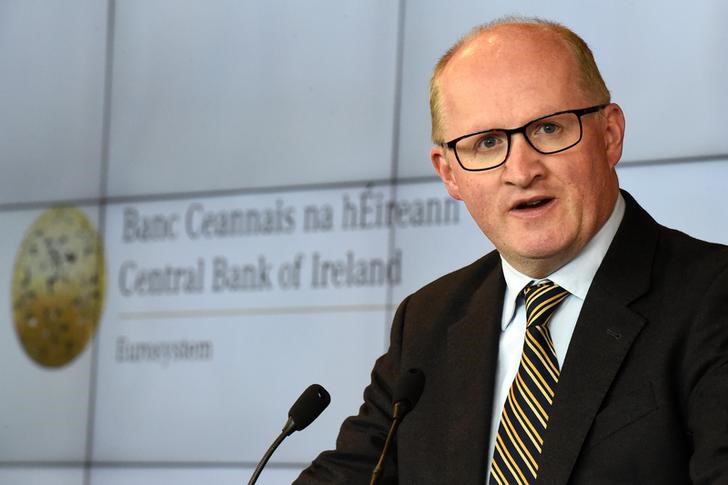Investing.com -- On day two of the Jackson Hole symposium, Philip Lane, Chief Economist of the European Central Bank (ECB), delivered insights. The ECB's current stance and future direction were discussed in a panel on the effectiveness and transmission of monetary policy, where Lane raised concerns about the risks of maintaining high interest rates for a long time.
As per analysts at Evercore ISI analysts, these remarks indicate growing apprehension within the ECB about falling behind the monetary easing curve.
Lane's prepared remarks largely focused on the ECB's response to macroeconomic developments since the pandemic, reflecting on how the institution navigated the economic shocks that hit the eurozone.
However, the most telling insights came in his conclusions, where Lane hinted at the ECB's future monetary policy direction. He emphasized that while it is crucial for the monetary stance to remain restrictive to ensure a sustainable disinflation process, there are significant risks associated with keeping rates too high for too long.
As per Lane, such a path could lead to chronically below-target inflation over the medium term and exacerbate negative impacts on output and employment.
Evercore ISI analysts interpret Lane’s remarks as an indication that some members of the ECB, particularly those with a more dovish stance, are becoming increasingly worried about the ECB's trajectory in the context of global monetary policy trends.
“We think this signals that Lane and likely other doves in the ECB Council are becoming increasingly concerned that the ECB may fall behind the curve in terms of monetary easing given the shift in the Fed rate outlook and signs that the economic recovery in the EZ – and especially in Germany– may be losing momentum,” the analysts said.
This could leave the eurozone economy vulnerable to prolonged periods of weak inflation and a potential breakdown in the labor market.
Evercore ISI suggests that Lane's comments might be a precursor to a more proactive approach from the ECB, advocating for a faster pace of monetary easing to mitigate these risks.
“This is consistent with our view that the ECB should make October a “live” meeting, but our base case remains that the ECB will cut in September and December but skip October, before speeding up to a cut every meeting in Q1 25,” the analysts said.
A significant drop in services inflation, which is expected to be reported soon, could further compel the ECB to act swiftly, breaking the current policy inertia.
The broader context of Lane's remarks is informed by the research presented at the symposium, which underscored the complex trade-offs central banks face in the current economic environment.
Pierpaolo Benigno and Gauti B. Eggertsson in a research paper have re-examined the relationship between job vacancies, unemployment, and inflation, suggesting that traditional models may no longer accurately capture the dynamics at play.
This research reinforces the idea that central banks, including the ECB, need to be vigilant and adaptive in their policy responses to avoid missteps that could either reignite inflation or stifle economic growth.
Other papers discussed at the symposium also highlighted the evolving nature of monetary policy transmission. For instance, a study by Gomez-Cram, Kung, and Lustig found that U.S.
Treasury yields have become more sensitive to fiscal news, signaling a shift in how government bonds are perceived in global markets.
This shift has significant implications for central banks' use of quantitative easing (QE) as a policy tool, particularly in the eurozone, where QE has been a cornerstone of the ECB's response to economic crises.
